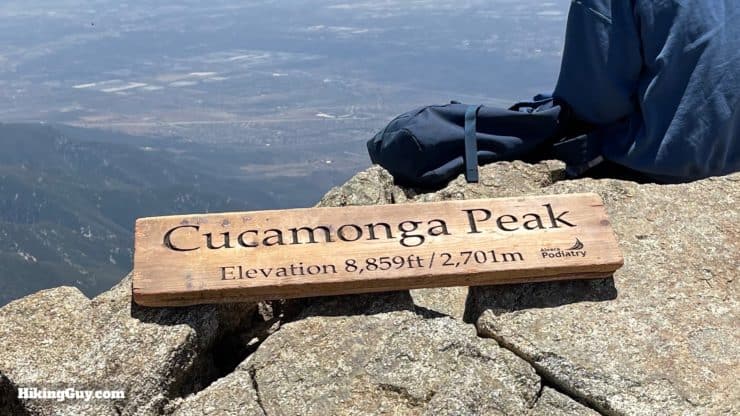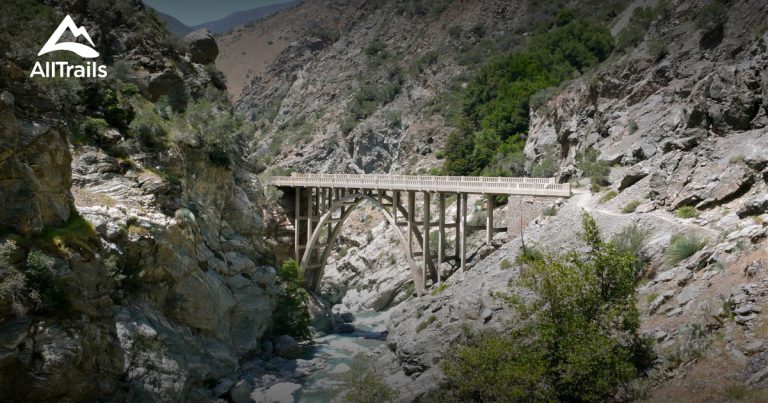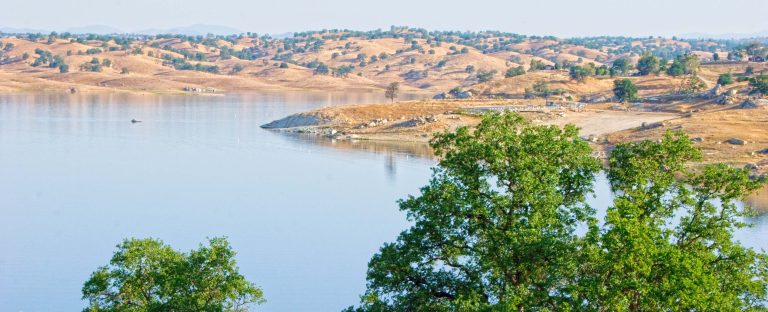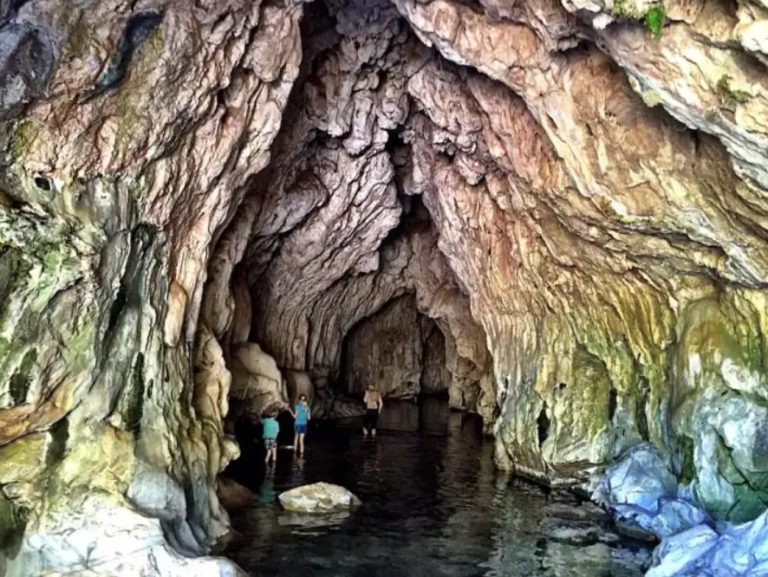Cucamonga Peak Trail, nestled within the San Bernardino National Forest, California, beckons adventurous hikers with a challenging climb and panoramic vistas. This iconic trail, reaching a summit of 8,862 feet, is a popular destination for those seeking a strenuous workout and a chance to commune with nature’s grandeur.
Contents
Trail Overview|Distance, Difficulty, and Elevation Gain
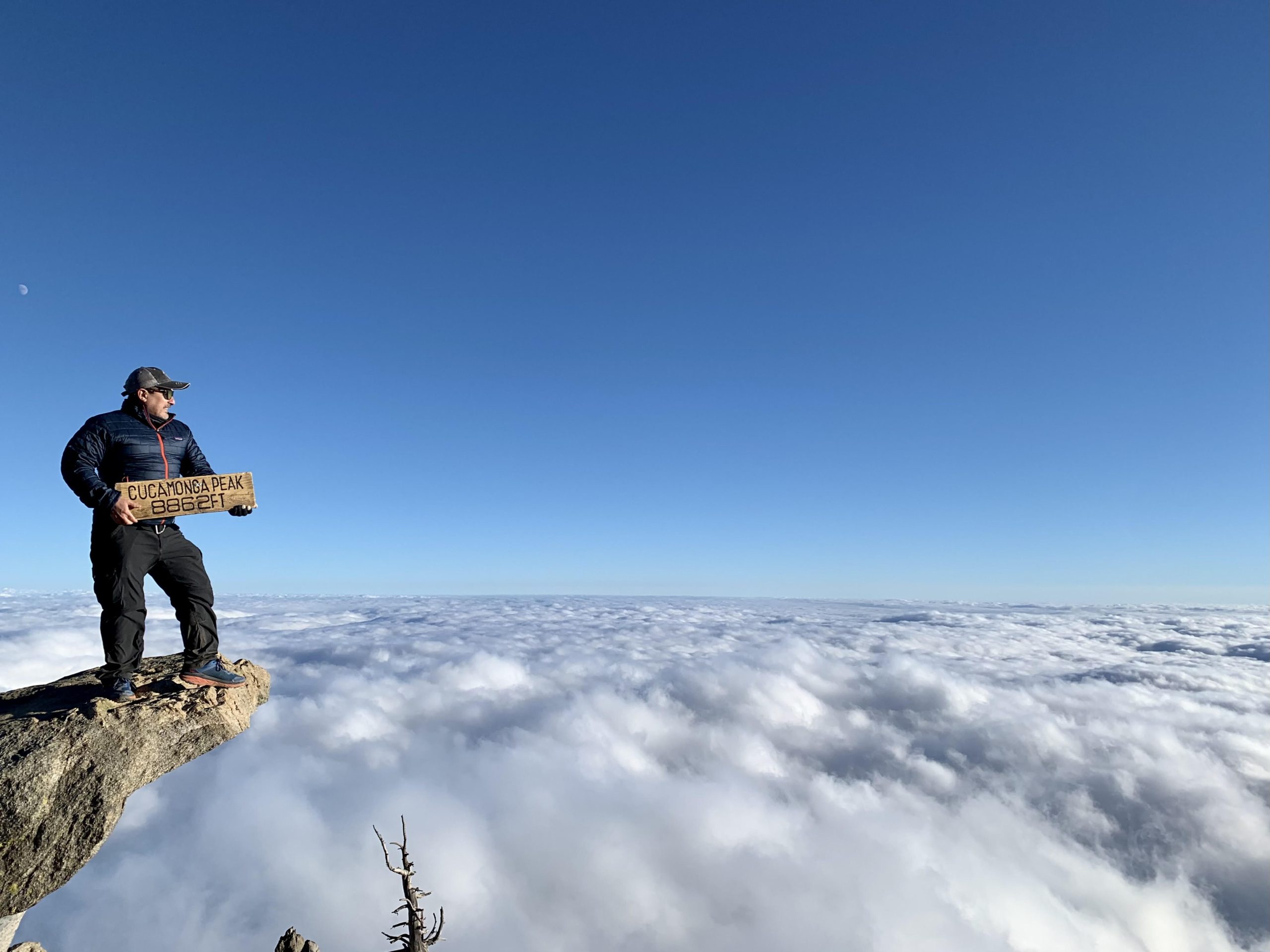
The Cucamonga Peak Trail is a challenging route, typically classified as difficult. The most common approach starts at the Icehouse Canyon Trailhead, near Mount Baldy. This route offers a round-trip distance of approximately 11 to 12 miles, with an elevation gain of roughly 4,100 to 4,300 feet. The significant elevation gain and distance make this hike a full-day endeavor, requiring a good level of physical fitness and proper preparation.
Planning Your Cucamonga Peak Adventure
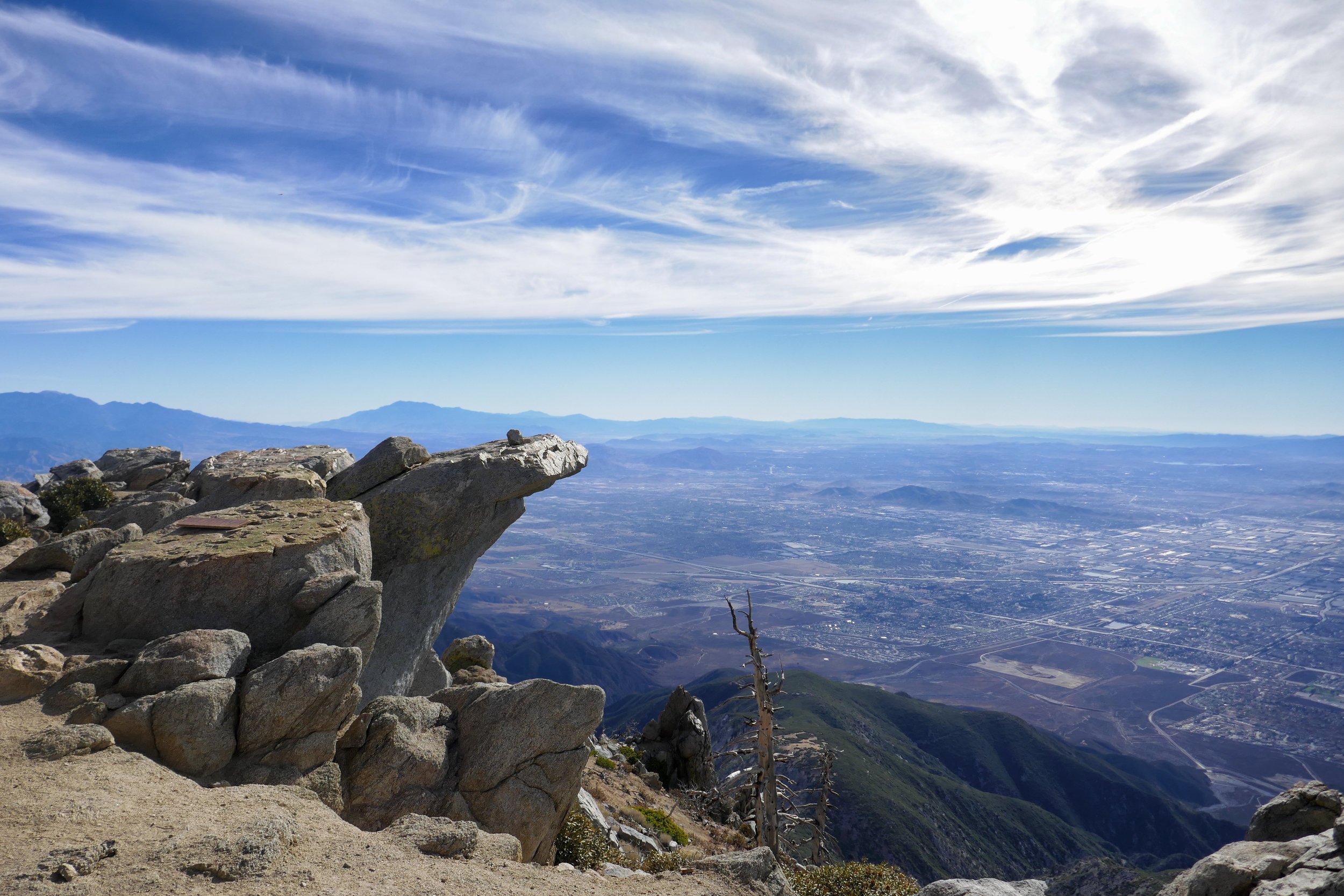
Permits and Fees: Before embarking on your journey, ensure you obtain the necessary permits. The Cucamonga Peak Trail lies within the Cucamonga Wilderness area, managed by the United States Forest Service. A wilderness permit is mandatory for any overnight stays or travel beyond designated day-use areas. Additionally, an Adventure Pass is required for parking at the Icehouse Canyon Trailhead.
Seasonality and Weather Conditions: The best time to tackle Cucamonga Peak Trail is generally between spring (late April) and fall (late November). During these months, you can expect pleasant hiking weather with manageable temperatures. Winter brings snow and treacherous conditions, making the trail unsuitable for most hikers. Always check the latest weather forecast before your hike, and be prepared for potential changes in mountain weather.
Gear and Equipment: Proper gear is crucial for a safe and enjoyable Cucamonga Peak hike. Sturdy hiking boots with good ankle support are essential. Pack plenty of water, as there are limited freshwater sources on the trail. Bring high-energy snacks and a lunch to keep you fueled throughout the day. Sun protection, including sunscreen, sunglasses, and a hat, is necessary. Depending on the season, you may also need layers of clothing to adapt to changing temperatures.
Additional Considerations: Research the “Leave No Trace” principles to minimize your impact on the environment. A headlamp or flashlight is helpful in case your hike extends past sunset. Consider trekking poles for added stability on steep sections.
The Hike Itself|A Journey Through Diverse Landscapes
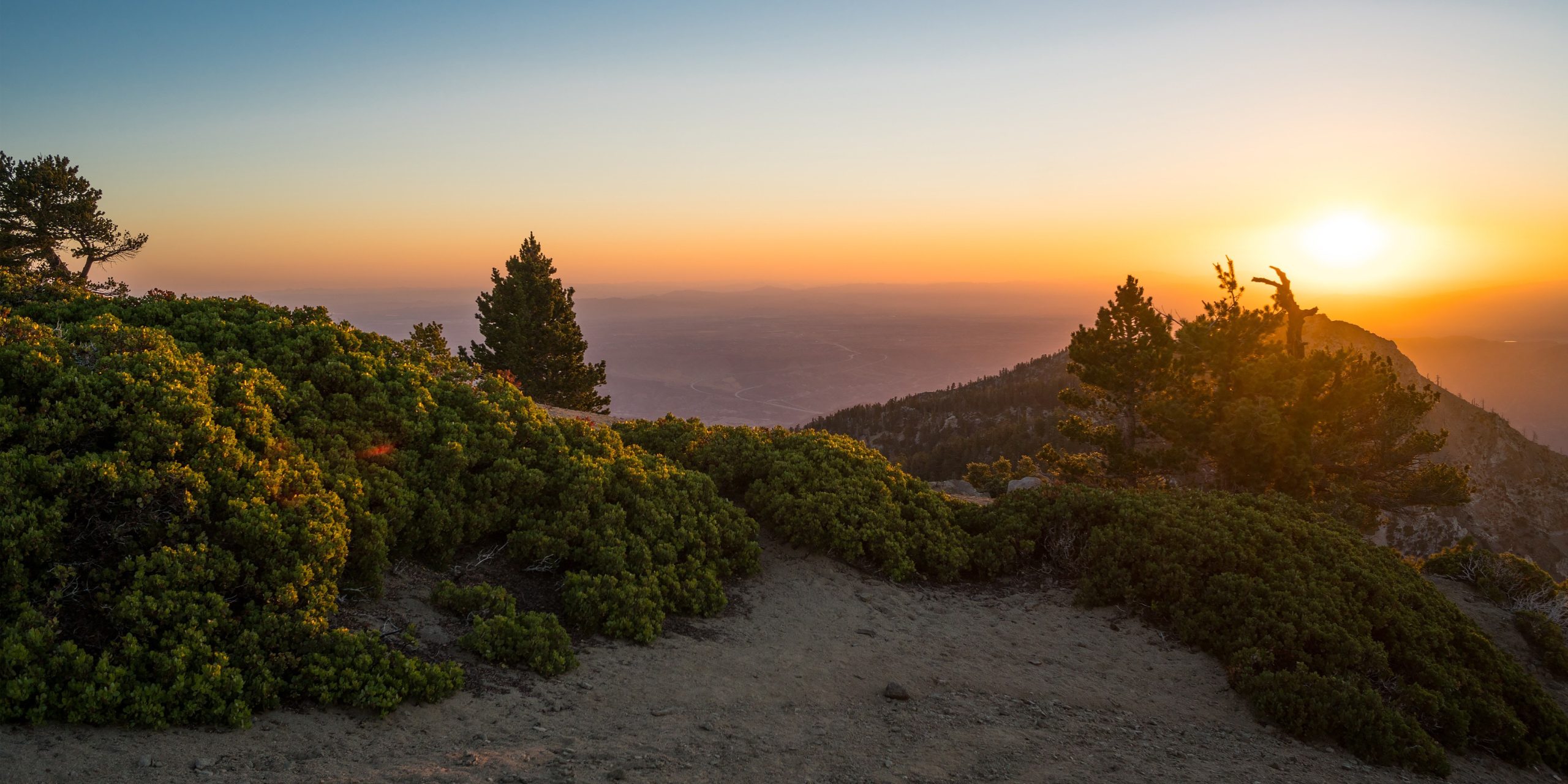
The Cucamonga Peak Trail offers a diverse hiking experience, transitioning through distinct ecological zones. The initial section follows Icehouse Canyon Trail, a well-maintained path with a gradual incline. Lush vegetation surrounds you, with towering pines and the sounds of a babbling stream.
As you ascend, the landscape transforms into a drier, chaparral ecosystem. Here, you’ll encounter diverse plant life, including vibrant wildflowers in spring and summer. Keep an eye out for local wildlife; sightings of deer, rabbits, and various bird species are not uncommon.
The trail eventually reaches Icehouse Saddle, a scenic viewpoint offering stunning panoramas of the surrounding mountains and valleys. This serves as a natural resting point before the final, more challenging push towards the summit.
The final ascent to Cucamonga Peak involves steeper switchbacks and loose scree. Here, the use of trekking poles can be particularly advantageous. The effort is rewarded upon reaching the summit, where breathtaking 360-degree views await. On a clear day, you can witness the majestic expanse of the San Gabriel Mountains, the vast desert landscapes to the east, and even a glimpse of the Los Angeles basin in the distance.
Beyond the Summit|Exploring the Cucamonga Wilderness
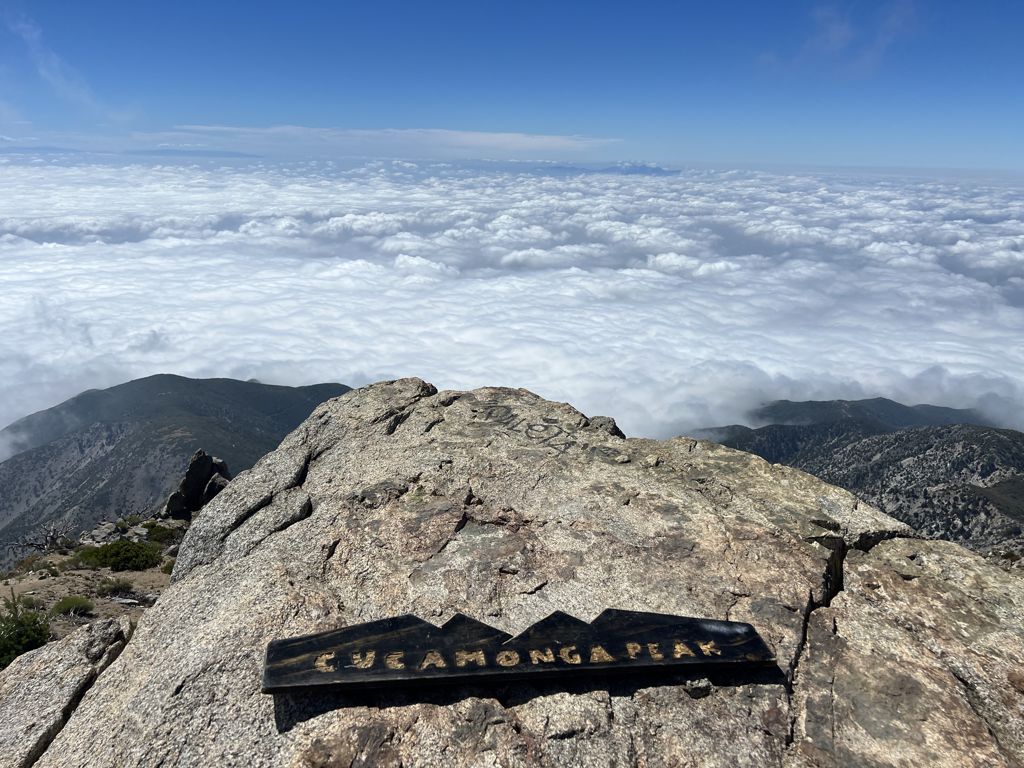
The Cucamonga Peak Trail serves as a gateway to the vast Cucamonga Wilderness. For experienced backpackers seeking a multi-day adventure, options exist for further exploration. Chapman Campground and Kelly Camp provide designated camping spots within the wilderness area.
These campsites offer a unique opportunity to immerse yourself in the wilderness and witness the star-studded night sky after a challenging day on the trail. However, proper wilderness camping etiquette and adherence to Leave No Trace principles are essential.
Read More: Capturing the Enchantment | A Photographic Guide to the Natural Bridges Trailhead
Safety Considerations on Cucamonga Peak Trail
Hiking Cucamonga Peak requires an awareness of potential safety hazards. Dehydration is a common concern, so ensure you stay well-hydrated throughout the hike. Be mindful of loose rocks and uneven terrain, especially on steeper sections.
The weather in the mountains can change quickly. Always be prepared for unexpected rain or wind chills. Be aware of potential for heatstroke during summer months. Let someone know your planned route and estimated return time before setting off.
Conclusion: A Rewarding Challenge for Experienced Hikers
The Cucamonga Peak Trail offers a challenging yet rewarding experience for seasoned hikers. With breathtaking views, diverse ecosystems, and a chance

